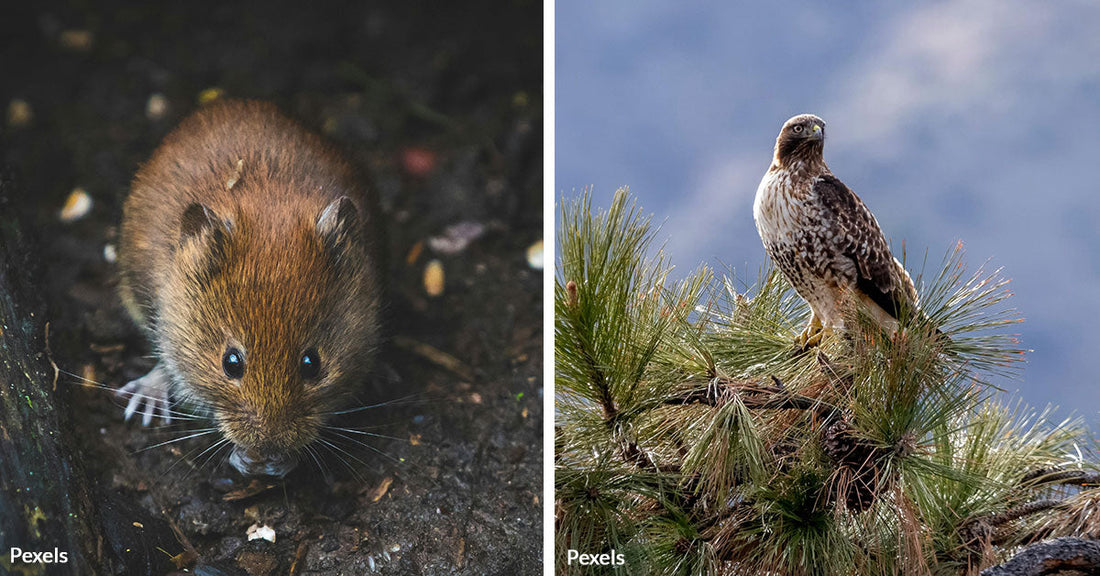Rat Poison Is Devastating Washington D.C. Wildlife
Matthew Russell
Photo: Pexels
Rat poison is rapidly harming animals in Washington D.C. The chemicals, designed to kill rodents, are now poisoning birds, mammals, and even invertebrates.
Wildlife centers and researchers have reported rising cases of poisoning. According to Science, small doses of rat poison can trigger deadly internal bleeding. The trend has worsened over recent years, and experts warn that the damage could extend throughout the food web.
“It takes only one meal contaminated by rodenticides to bring down a predator,” wildlife pathologist Nicole Nemeth told El Tiempo Latino.
This threat is not isolated to raptors; mammals like squirrels, opossums, and even songbirds face similar risks.

Photo: Pexels
Rat poison is poisoning urban wildlife in Washington D.C.
Widespread Impact on Diverse Species
Recent studies reveal that many species have become inadvertent targets of rodenticides. Tissue samples from 101 animals in D.C. showed that 85% carried traces of these poisons, The Washington Post reports. Squirrels, which form a critical link in the urban food chain, were among the most affected. Wildlife rescue centers documented a dramatic rise in cases from two per year in earlier periods to over 38 cases in 2024.
Animals get poisoned either by directly ingesting the bait or by consuming prey that has already taken the poison. Even predators, such as hawks and owls, do not escape the danger when they eat a poisoned rodent, City Wildlife reports. This secondary poisoning fuels a cascade of lethal consequences in urban ecosystems. In some cases, non-target species die slowly, suffering from severe internal bleeding before collapse.

Photo: Pexels
Predatory birds ingest toxins from contaminated prey.
Study Findings in Washington D.C.
City Wildlife, in collaboration with the DC Department of Energy and Environment, conducted a detailed study. The research aimed to determine how widespread rodenticide poisoning is among local wildlife. Researchers analyzed dead or severely ill animals collected across all quadrants of the District. The findings were stark. Most tested animals, including 82% of the squirrels, showed evidence of poisoning.
“They are key players in our food chain,” Sarah Sirica, the center’s clinic director, told The Washington Post. “When a squirrel is poisoned, every predator that feeds on it is at risk.”
The study also revealed that cases of poisoning are not new but have escalated. Numbers have risen steadily over recent years, trends that are disturbing for a region already grappling with urban wildlife challenges. The poison can persist in the tissues of animals for long periods, meaning its effects continue to impact predators even long after a single exposure.

Photo: Pexels
Secondary poisoning spreads toxins through food chains.
Implications for Urban Ecosystems
The ripple effects of rodenticide use extend beyond immediate poisoning. When predators consume contaminated prey, the toxins accumulate in their bodies. This buildup can weaken immune systems and impair essential biological functions. As the poison spreads through the food web, it risks altering predator-prey dynamics and reducing biodiversity.
Rodenticides can even affect smaller creatures. Invertebrates, which are fundamental to many ecosystems, have been found with detectable levels of these compounds. Their poisoning can disrupt pollination, soil health, and the overall balance of urban habitats. Such ecological disturbances may lead to unforeseen consequences for the natural regulation of pests and the integrity of urban green spaces.
hoto
Photo: Pexels
Alternatives to toxic poisons exist.
Expert Opinions and Alternatives
Experts from various institutions have urged immediate action. Cynthia Hopf-Dennis from Cornell University criticized the widespread use of these chemicals.
“If I had my way, none of these anticoagulant rodenticides would be on the landscape,” she told Science.
Veterinarian Patrick Hilson told El Tiempo Latino that treating a single case of poisoning in pets can cost thousands of dollars. Hilson’s experience shows that the economic burden on pet owners is significant, and many simply cannot afford the high costs of treatment.
Alternative methods for rodent control offer hope. Simple measures such as sealing trash containers and proper food storage can reduce rodent populations without the need for harmful chemicals. Some communities have turned to ecological methods like habitat modification and biological control, such as attracting raptors to naturally curb rodent numbers. According to the Wildlife Center of Virginia, prevention is better than cure.
Local authorities and wildlife advocates agree that reducing reliance on rodenticides is a necessary step. With urban populations of rodents rising, communities must explore safer, sustainable control methods. The evidence from Washington D.C. serves as a stark warning. Failure to change current practices will continue to harm the wildlife that shares urban spaces with humans.
Matthew Russell is a West Michigan native and with a background in journalism, data analysis, cartography and design thinking. He likes to learn new things and solve old problems whenever possible, and enjoys bicycling, spending time with his daughters, and coffee.
